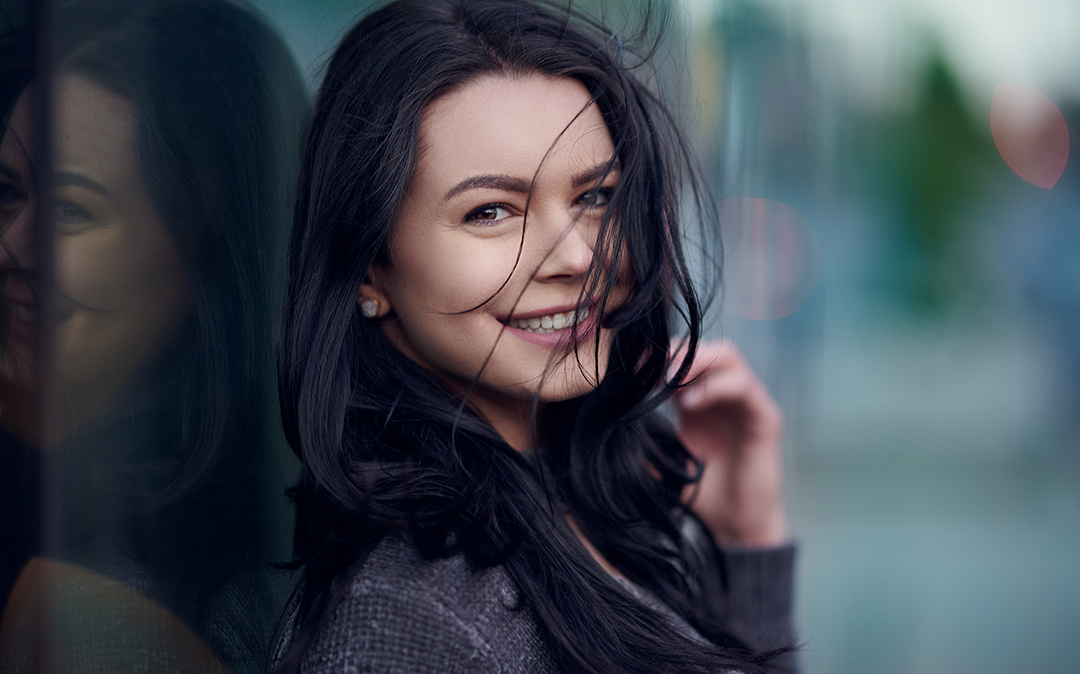If you have ever wondered how to set up your camera for shooting portraits, then make sure you read every single word of this article in order to discover the best camera settings for natural light and flash portraits.
If you would like more creative control over the creation of your portraits, you should first set your camera to manual mode. Setting your camera to manual mode will allow you to have greater control over your camera’s ISO, shutter speed, and aperture.
Setting Your Camera's ISO
You should always start with your ISO at your camera's native ISO setting in order to get the most dynamic range from your cameras sensor. Refer to your camera’s manual for your cameras native ISO setting; on most cameras, it is ISO 100. Once you have your ISO set, it is time to decide on your aperture.

Setting Your Camera's Aperture
Your camera’s aperture setting is very much a creative choice. If you would prefer a blurry background, then set your aperture between f/1.4 and f/2. If your minimum aperture is f/2.8, then set it to f/2.8. Take a test shot and then make a creative decision on what aperture setting you prefer.
If you are outdoors, you may prefer f/1.4 to f/2.8; if you are indoors, you may want a little more depth of field, so you may want to try between f/4 and f/8. It all depends on the look you are going for creatively and the situation you find yourself shooting in.
Setting Your Camera's Shutter Speed
This will vary greatly if you are shooting outdoors or if you are using flash either indoors or outdoors. As a general rule, you should set your shutter speed to at least double your focal length. For example, if you are using a 100mm prime lens, you should have your shutter set to a minimum of 1/200.

Some people will disagree with that statement because certain cameras and lenses have stabilization; if you are not using image stabilization, then doubling your focal length is a good starting point.
There are some exceptions to that rule, though, and here are a few examples. If you are shooting with flash that does not allow for high-speed sync, some cameras will limit your flash sync speed to 1/160 or 1/200. Test out your maximum camera sync speed if you are working with strobes. If you exceed your camera’s sync speed, you will see a black line in your images; make sure you watch out for that, as it will ruin your images.
Mirrorless Camera Shutter Speeds Faster Than 1/1,000
If you are shooting in natural light, some cameras allow you to shoot up to a shutter speed of 1/8,000. One thing you should to be aware if you are using a mirrorless camera like the Sony a7 III is that if you are shooting over 1/1,000, you should turn off your camera's electronic shutter for maximum bokeh in your images.
For some reason, a few mirrorless camera users have reported a noticeable difference when shooting at shutter speeds faster than 1/1,000 with the electronic shutter turned on. The electronic shutter can also cause banding when shooting with flash on some mirrorless cameras as well, so be cautious of those camera settings.
For some additional helpful tips on shooting Portraits both in natural light and flash, check out the video I shot for you below.
In conclusion, these are general suggested portrait settings to start with; feel free to experiment and be creative and break the rules as you see fit. Everyone approaches things a little differently. What settings do you use when you are taking portraits? Do you shoot in manual mode or do you prefer another camera mode? Let me know in the comments section below.







Portrait Mode: ON
Blur Setting: 10
Or whatever that translates to on your phone...
(I obviously don't have an iPhone so I don't know what the hell the settings even look like so don't bother taking this seriously...)
Most cameras don't allow you to use flash with electronic shutter on...
Most important thing..Focus focus focus, how and where
I agree with Eyal laybel . Focus focus focus. With this "golden receipt " beginners will have many missed AF shots and their frustration will be rising. Too much "bla bla" instead of substantive advices IMHO .
Informative post, thanks.
Thanks
Please explain “if you are shooting over 1/1,000, you should turn off your camera's electronic shutter for maximum bokeh in your images.“
I suggest testing that so you can see the difference, it is noticeable. If you do a Google search you may find image examples as well.
I'd add that shooting at or near wide open leaves little, if any, latitude for recomposing. If your camera gives you a plethora of focusing points and/or the live-view focus rectangle covers near 100% of the view, then you're gold.
I love the feel of your lead image Craig. The combination of technique and the power of your model are captivating. Very strong image.
Thanks Julian Ray I appreciate your kind words. If you want to see some behind the scenes footage from this natural light shoot, check out this video: https://www.youtube.com/watch?v=A_uqTZVYS4E
great video....appreciate the quick delivery of the information!